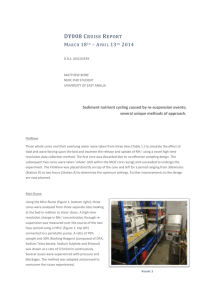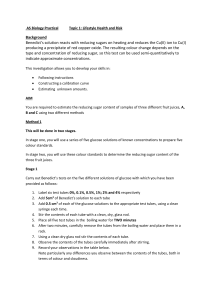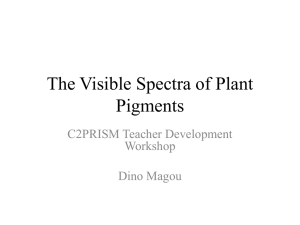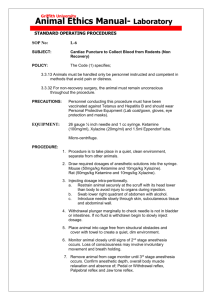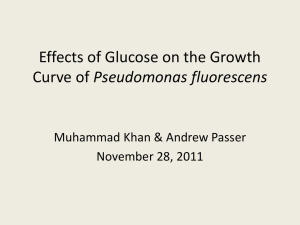Research Question/Statement: Compare the amount of sugar in
advertisement
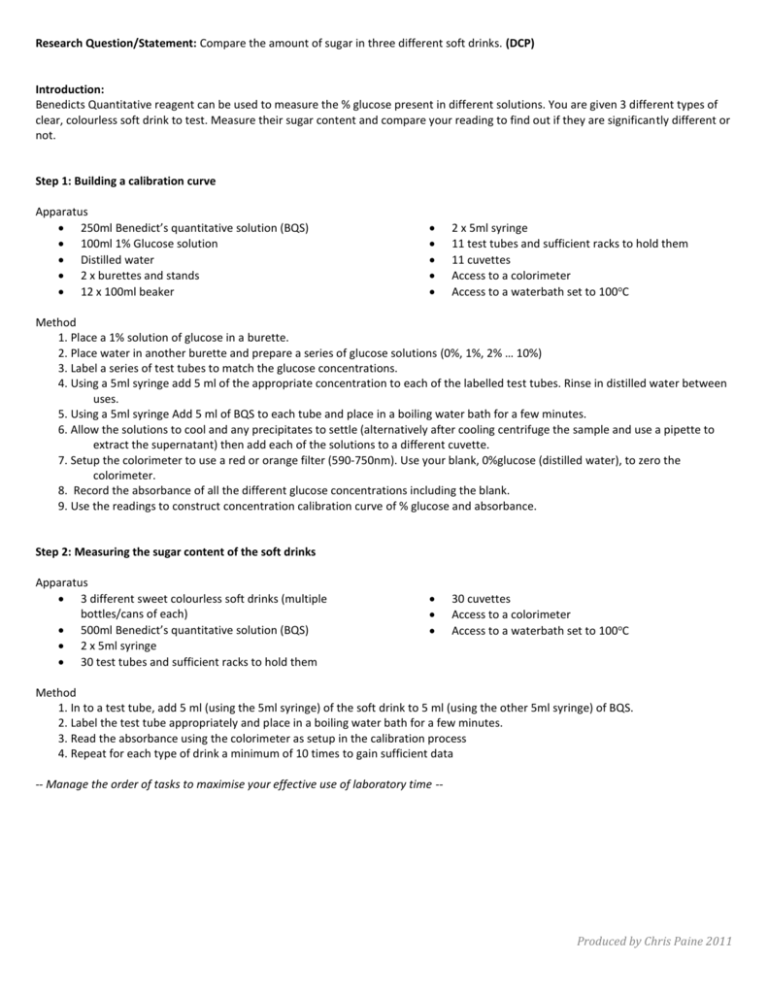
Research Question/Statement: Compare the amount of sugar in three different soft drinks. (DCP) Introduction: Benedicts Quantitative reagent can be used to measure the % glucose present in different solutions. You are given 3 different types of clear, colourless soft drink to test. Measure their sugar content and compare your reading to find out if they are significantly different or not. Step 1: Building a calibration curve Apparatus 250ml Benedict’s quantitative solution (BQS) 100ml 1% Glucose solution Distilled water 2 x burettes and stands 12 x 100ml beaker 2 x 5ml syringe 11 test tubes and sufficient racks to hold them 11 cuvettes Access to a colorimeter Access to a waterbath set to 100oC Method 1. Place a 1% solution of glucose in a burette. 2. Place water in another burette and prepare a series of glucose solutions (0%, 1%, 2% … 10%) 3. Label a series of test tubes to match the glucose concentrations. 4. Using a 5ml syringe add 5 ml of the appropriate concentration to each of the labelled test tubes. Rinse in distilled water between uses. 5. Using a 5ml syringe Add 5 ml of BQS to each tube and place in a boiling water bath for a few minutes. 6. Allow the solutions to cool and any precipitates to settle (alternatively after cooling centrifuge the sample and use a pipette to extract the supernatant) then add each of the solutions to a different cuvette. 7. Setup the colorimeter to use a red or orange filter (590-750nm). Use your blank, 0%glucose (distilled water), to zero the colorimeter. 8. Record the absorbance of all the different glucose concentrations including the blank. 9. Use the readings to construct concentration calibration curve of % glucose and absorbance. Step 2: Measuring the sugar content of the soft drinks Apparatus 3 different sweet colourless soft drinks (multiple bottles/cans of each) 500ml Benedict’s quantitative solution (BQS) 2 x 5ml syringe 30 test tubes and sufficient racks to hold them 30 cuvettes Access to a colorimeter Access to a waterbath set to 100oC Method 1. In to a test tube, add 5 ml (using the 5ml syringe) of the soft drink to 5 ml (using the other 5ml syringe) of BQS. 2. Label the test tube appropriately and place in a boiling water bath for a few minutes. 3. Read the absorbance using the colorimeter as setup in the calibration process 4. Repeat for each type of drink a minimum of 10 times to gain sufficient data -- Manage the order of tasks to maximise your effective use of laboratory time -- Produced by Chris Paine 2011 Lab Report Write up DCP only for this lab and answer the following points: You were given a number of different cans/bottles of drinks. Did the sugar content of the each drink vary from bottle to bottle? What is your assessment of the quality control of the manufacturers? Suggest further steps: consider the problems, and if you can, potential solutions of using this method to measure the amount of sugar present in sweetened tea drinks and solid foods such a varieties of apple Produced by Chris Paine 2011
